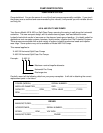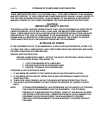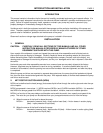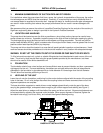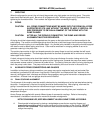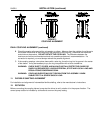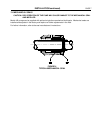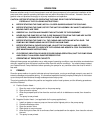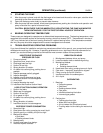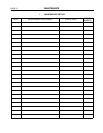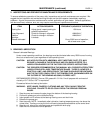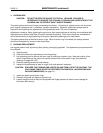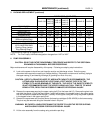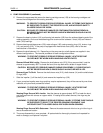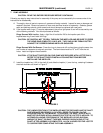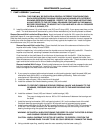
OPERATION (continued) PAGE 9
3. STARTING THE PUMP
A. After the pump is primed, and with the discharge valve closed and the suction valve open, start the driver
according to the driver manufacturer’s instructions.
B. Open the discharge valve slowly to prevent water hammer.
C. After the pump has been started, check bearing temperatures, packing box lubrication and operation and
pump noise level for a period of several hours.
CAUTION: BEGIN THESE CHECKS IMMEDIATELY UPON STARTING THE PUMP AND MONITOR
THEM CONTINUOUSLY FOR THE FIRST SEVERAL HOURS OF OPERATION.
4. BEARING OPERATING TEMPERATURE
These pumps are designed to operate over a wide ambient temperature range. The bearing temperature, when
measured at the outside surface of the bearing housing, should not exceed 190
o
F. Temperatures in excess of
190
o
F may indicate lack of lubricant, bearing overload or insipient bearing failure. If the temperature exceeds
this limit, the pump should be stopped and the cause investigated and corrected.
5. TROUBLESHOOTING OPERATING PROBLEMS
If you have followed the installation and start-up procedures outlined in this manual, your pump should provide
reliable service and long life. However, if operating problems do occur, significant time and expense can be
saved if you use the following checklist to eliminate the most common causes of those problems.
INSUFFICIENT DISCHARGE
PRESSURE OR FLOW
1. Pump not primed.
2. Speed too slow; check driver.
3. Discharge head too high.
4. Suction lift too high.
5. Wrong direction of rotation
6. Air leaks into suction piping, packing box or
gaskets.
7. Impeller passage partially plugged.
8. Impeller damaged.
9. Impeller running clearance too large.
10. Insufficient suction line submergence.
11. Air in liquid.
12. Impeller diameter too small.
13. Insufficient Net Positive Suction Head.
LOSS OF SUCTION DURING OPERATION
1. Suction line leaks.
2. Water seal line plugged.
3. Suction lift too high.
4. Air or gases in liquid.
5. Air leaks into suction piping, packing box or
gaskets.
6. Wrong direction of rotation.
7. Insufficient suction line submergence.
EXCESSIVE POWER CONSUMPTION
1. Speed too high.
2. Head lower than rating, pumping too much liquid.
3. Specific gravity or viscosity of liquid too high.
4. Mechanical defects:
• Shaft bent
• Rotating element binds
5. Misalignment.
6. System head lower than design.
7. Incorrect impeller diameter.
VIBRATION OR NOISE
1. Misalignment between driver and pump.
2. Loose foundation bolts or defective grouting.
3. Mechanical defects:
• Shaft bent
• Rotating element binds
4. Head lower than rating; pumping too much liquid.
5. Pipe strain – improperly supported or aligned.
6. Pump running at shut-off condition.
7. Insufficient suction line submergence.
8. Air in liquid.
OVERHEATING
1. Bearings:
• Excessive grease.
• Shaft bent.
• Rotating element binds.
• Pipe strain.
• Insufficient bearing lubrication.
• Incorrect type grease
2. Packing box:
• Packing gland too tight.
• Water seal line plugged
• Air not vented out of mechanical seal.
• Flushing water not circulating for mechanical
seal.



